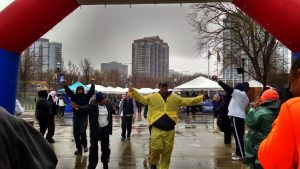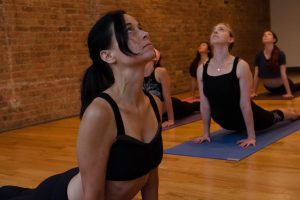The success of “Slumdog Millionaire” at last year’s Oscars has popularized India’s dance culture. Bollywood dancing has dominated clubs and school teams nationwide, creating a higher demand amongst Chicago’s growing number of Indian dance schools.
The youth craze for Bollywood dancing is the biggest competition for classical Indian dance schools, said Pranita Jain, artistic director of Kalapriya.
“Bollywood dancing is instant gratification,” Jain said. “What I teach is a long tradition of classical art form.”
[youtube]http://www.youtube.com/watch?v=mHws5pdRkC4[/youtube]
Despite the competition, classical Indian dance schools remain strong in membership and maintaining their cultural significance.
Dancing plays an integral role in Indian heritage and culture; the practice started as a folk tradition and is still used to tell mythological stories. Each classical form originated from a region of the Indian subcontinent.
Kalapriya, 1438 E. 57th St., has specialized in the classical Bharata Natyam dance form since its founding in 1994. Bharata Natyam originated from the southern state Tamil Nadu and is globally the most popular. It was created as a higher form of entertainment for the gods, according to myth.
“[Bharata Natyam] is kind of creative expression using your body,” said 15-year-old Angira Shirahatti, a nine-year Bharata Natyam dancer at Kalapriya.
Bharata Natyam uses specific sets of hand gestures, facial expressions, foot patterns and rhythms to tell stories; dancers cannot use their hips or chest because it’s considered seductive. Bollywood dancing, on the other hand, is a combination of Indian hip hop, jazz and Bhangra, danced to simple beats without a set pattern.
“Because it’s a pop style, it’s more conducive toward people who want to pick up on a fad, jump into a class and take something that doesn’t require a lot of dedication,” said Anjal Chande, director of Soham Dance Space.
Chande teaches Bharata Natyam at the Soham Dance Space, 922 N. Damen Ave. Chande started learning at the age of 7 when she accompanied her mother to dance classes. Most Bharata Natyam dancers start at 5 or 6 years old and carry on through high school.
“She’s very impressed with dance,” said Niranjani Prabhakar of her 6-year-old daughter who started Bharata Natyam dancing at Kalapriya in October. “We wanted to give her something from our Indian heritage.”
The cultural teachings provided by classical dance is the most common reason for learning, said Jain. There were very few classical Indian dance teachers when Jain came to Chicago in 1991. Since then the Indian immigrant population has increased, creating more demand for teachers.
Chande, 25, is a second generation Indian who admires Chicago’s cultural diversity. That is the reason she started her school here.
“The classical arts in general, you think there’s a very limited audience to begin with, but I think there’s a lot of potential to connect with a lot more people,” Chande said.
The growing appreciation of classical Indian dance led Kalapriya to experiment with multicultural dance forms, which began in 2001. The experimentations are a mix of dance forms from Asia, Africa and Indonesia that tell stories with universal themes.
The shows have been performed at different Chicago Public Schools. A cross cultural festival will be held at the Harold Washington Library, 400 S. State St., from April 30-May 1.

![Reblog this post [with Zemanta]](http://img.zemanta.com/reblog_c.png?x-id=ef7671dc-5d48-4a21-be28-463979191e33)




Be First to Comment